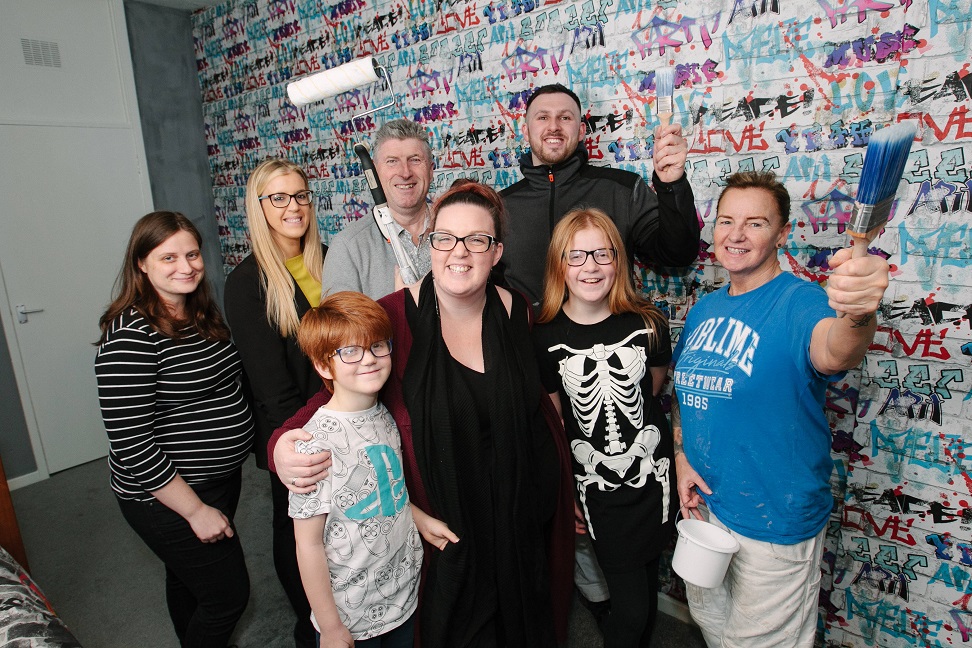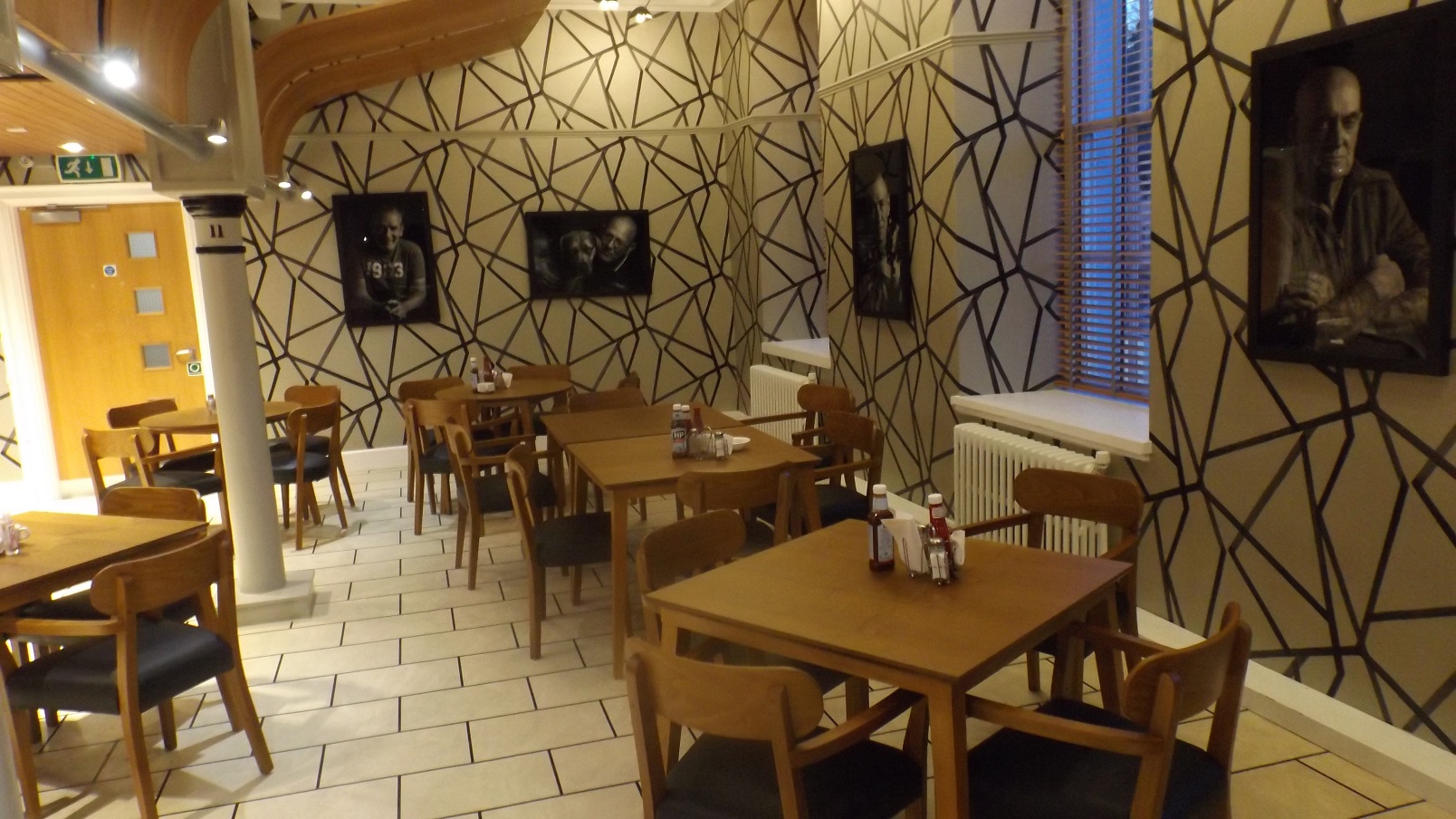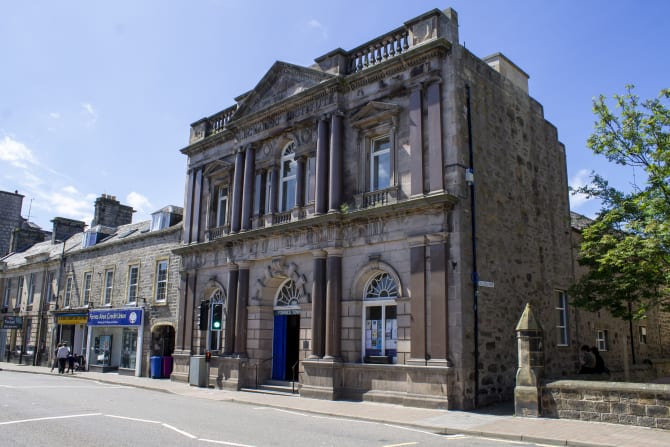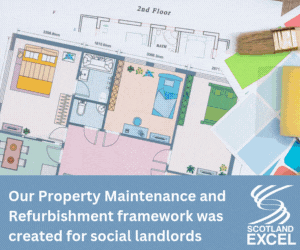Building Briefs – December 12th
- Mactaggart & Mickel renovates Linwood home of care experienced woman
A Linwood maisonette has had a makeover in time for Christmas thanks to a pioneering partnership between Mactaggart & Mickel and charity Who Cares? Scotland.

Employees from the housebuilder brought their ‘day job’ skills to bear to wallpaper and paint the three-bedroom housing association property.
Lee Davidson was in the care system for seven years as a child, then spent a further decade battling homelessness. Today, with four children under the age of 14, she still has had her work cut out to keep a roof over the family’s head. However, she is determined to realise her potential and is now in her fourth year at the University of the West of Scotland, and hopes to work in the voluntary sector when she graduates.
The housebuilder has pledged to work alongside Who Cares? Scotland to support the care experienced community in Scotland, to provide vital life skills and practical support to young people when they leave care and move their own homes for the first time.
As part of its arrangement with Who Cares? Scotland, Mactaggart & Mickel is providing work experience opportunities, arranging taster days on construction sites, and has hosted interviewing preparation days at its head office, which resulted in three participants finding jobs.
In April this year, more than 28 employees took part in the KiltWalk, raising over £6,700 for Who Cares? Scotland.
- Charity opens veterans’ dining room in Edinburgh after £160k refurbishment
A newly refurbished dining area for homeless veterans has been unveiled at Edinburgh’s Whitefoord House.

The charity Scottish Veterans Residences (SVR) invested over £160,000 in the project with the support of donors including ABF The Soldiers’ Charity, BlackRock UK, The MacRobert Trust, Poppyscotland, The RAF Benevolent Fund and Trinity House Maritime Charity.
Frank Ross, Edinburgh’s Right Honourable Lord Lieutenant and Lord Provost, joined residents at Whitefoord House, which provides housing support services for 85 homeless veterans, to formally open the new facilities.
They include a whole new servery area as well as upgraded decoration, flooring, furniture and fittings and the provision of a variety of seating areas and options. The new decoration includes large monochrome portraits of eight residents which will form a key feature of the dining room walls, highlighting how veterans are at the forefront of the work carried out by SVR.
The Whitefoord House dining room is used by residents three times a day and, for many, it provides a place for social interaction. The improved security that accompanies this refit will now enable 24-hour access to the space as a new, comfortable social area.
- First contractor signs UK Steel Charter
The first steelwork contractor has signed up to a new campaign to revitalise the steel sector in the UK.

(from left) UK Steel director general Gareth Stace, REIDsteel managing director Simon Boyd and British Steel acting chief executive Ron Deelen
John Reid & Sons Ltd (REIDsteel) has backed the UK Steel Charter, which aims to maximise the use of British made metals.
The firm adds its name alongside such signatories as Heathrow Airport, the Department for Business Energy & Industrial Strategy (BEIS) and Welsh and Scottish governments on the charter launched by trade body UK Steel.
REIDsteel designs, makes and builds steel structures of all kinds across the UK, Europe and the world. It directly employs 130 people at its main base and at peak times provides work for 400 people through subcontracting of fabrication and installation.
The UK steel sector makes a £1.6 billion direct contribution to UK GDP and supports a further £3.9bn.
- Application submitted to turn Dundee pub into flats
Plans have been submitted to Dundee City Council to convert a former pub into two flats.
Councillors will be asked to consider the proposals for the former Lyon Bar which is at the junction of Erskine Street and Lyon Street in Stobswell.
The Lyon Bar was only re-opened in the spring of this year after being up for lease since 2017.
The pub was formerly known as the Broadway Bar.
- New museum to be developed in Clydebank
A new museum is to be developed in Clydebank.
West Dunbartonshire Council is to invest £625k in the scheme and the plans will see a modern and interactive museum space built in the basement of Clydebank Central Library to explore the town’s rich industrial heritage as a global centre for sewing machine manufacturing and shipbuilding.
The new museum space will enable the town to commemorate the devastating impact of the Clydebank Blitz on the town.
The proposals increase the available space for the display of the council’s heritage collections and introduce opportunities for innovative and imaginative new displays. The development will also improved the overall accessibility of the venue and increase opportunities for citizens and visitors to access more objects from the council’s heritage collections than ever before.
As part of the plans, the Room of Remembrance currently based in the Town Hall will be moved to a dedicated space within the library building. This move would ensure that the Room of Remembrance continues to be a prominent element of Clydebank’s commemoration of the Blitz, appropriately linked with new museum displays telling the story of the tragedy.
Council officers will now apply for £50,000 of external funding to support the build costs, and £100,000 to support engagement activity with local audiences.
- Feathered friends in Hamilton get foodie treat from local nursery
A local nursery group in Hamilton will be making sure their feathered friends are well fed this winter with an array of hand-painted bird feeders.

The nursery group located within Woodhead Primary School has partnered with Barratt Homes – which has an ongoing partnership with the RSPB – to design and hang 30 bird feeders in the grounds of the primary school ensuring birds have a steady supply of food during the cold snap.
As frost sets in the ground hardens meaning that birds struggle to source their natural food supplies such as worms and insects that naturally live and rise to the top section of soil. That is where the bird feeders will come in helpful to the feathered community of Hamilton making sure they have food available until the ground thaws.
Barratt Homes and the RSPB are working together to boost biodiversity and promote wildlife across the UK including at a number of developments across Scotland. Through initiatives such as hedgehog highways, wild bee friendly planting and swift bricks, the aim of the partnership is to help wildlife and nature on many new housing developments.
Over the last 50 years 56% of species have declined while 15% are at risk of disappearing from our shores altogether. With the country’s wildlife continuing to struggle the groundbreaking partnership between Europe’s largest nature conservation charity and the country’s largest housebuilder is setting the benchmark for nature friendly homes.
In the first three years of the partnership, Barratt Homes and the RSPB worked together to agree best practice on what are the best plants and shrubs to use in gardens, the best times in the year to survey local species and how to make good use of existing nature features on new developments. In addition, the partnership is helping home owners by offering guidance and advice on how to help nature thrive.
- Community ownership on the increase across Scotland
The number of assets in community ownership is increasing in Scotland, according to new figures.

Forres Town Hall will soon move into community ownership
An official publication from the Scottish Government presents the number of assets in community ownership, the number of community groups that own assets and the total area of assets in community ownership.
It also provides the first figure for a new National Indicator which uses the number of assets owned by community groups to measure the extent of community ownership in Scotland.
As of December 2018, there were 593 assets in community ownership, owned by 429 community groups and with a total area of 209,810 hectares, 2.7% of the total land area of Scotland.
In 2018, 37 assets came into community ownership, an increase of 7% from 556 in 2017, comprising an additional 3,223 hectares. There were 27 community groups which took ownership of assets for the first time in 2018.
Community ownership is widespread across Scotland, however, there is a large difference between the distribution of assets, the community groups that own them and their corresponding land area.
Over a third (38%) of assets and a similar proportion (39%) of community groups are located in two local authorities: Highland (142 assets owned by 111 groups) and Argyll and Bute (84 assets owned by 54 groups).
Considering the land area of community-owned assets, Na h-Eileanan Siar and Highland together contain 96.4% (202,174 hectares) of the land area in community ownership in Scotland: 60,042 hectares for Highland; and 142,132 hectares for Na h‑Eileanan Siar.













